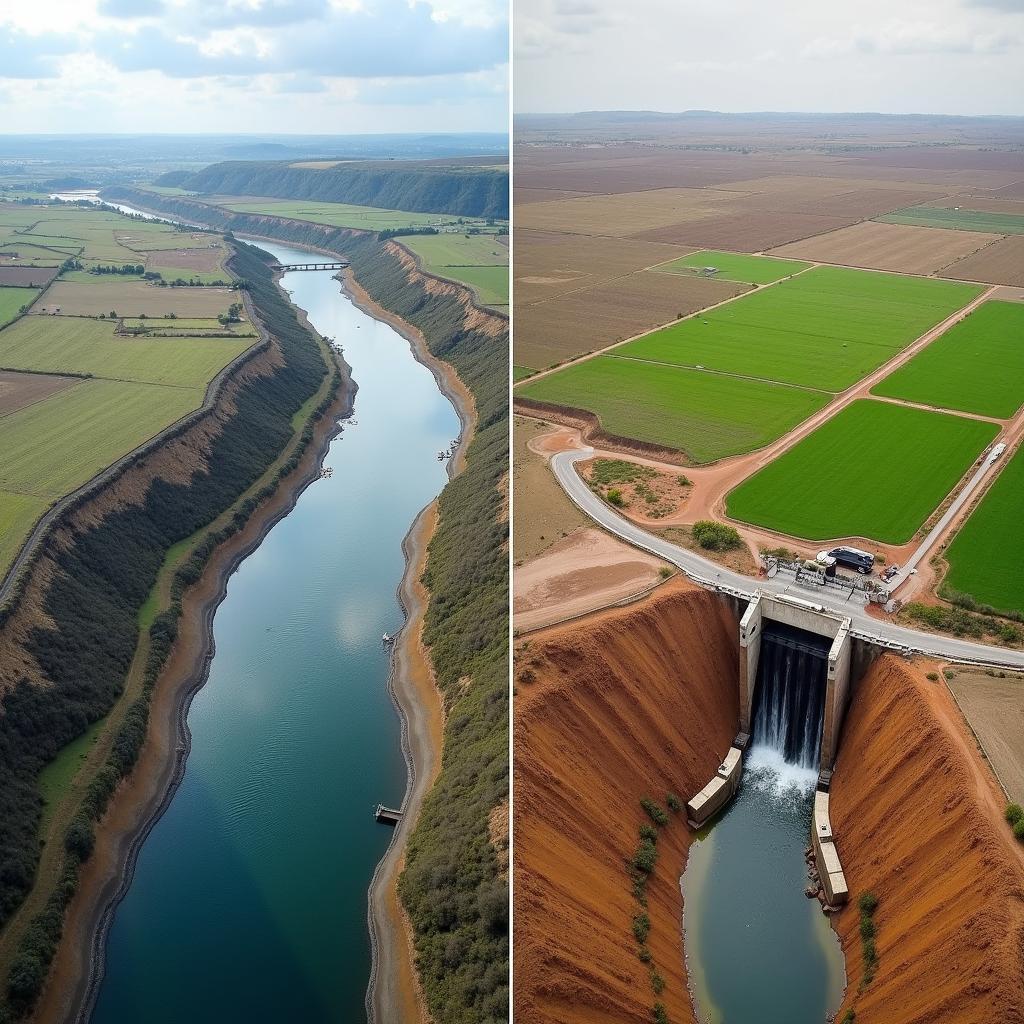In the IELTS Reading section, test-takers are required to comprehend and analyze various types of written texts. One of the themes that has been gaining prominence is “Economic effects of climate adaptation strategies.” Given the current global focus on climate change and economic sustainability, it’s vital to understand how adapting to climate conditions impacts economic outcomes. This topic has appeared in various IELTS tests, reflecting its relevance and the growing awareness surrounding it.
Nội dung bài viết
- Practice Reading Passage
- Climate Adaptation Strategies and Economic Impacts
- Reading Comprehension Questions
- Multiple Choice Questions
- True/False/Not Given Questions
- Matching Information
- Answer Key and Explanations
- Multiple Choice Questions
- True/False/Not Given Questions
- Matching Information
- Common Pitfalls in Reading Comprehension
- Vocabulary List
- Grammar Focus: Conditionals
- First Conditional
- Second Conditional
- Third Conditional
- Conclusion
Adaptation strategies for climate change are essential to minimize economic loss and enhance resilience against climate-related disruptions. This practice article will guide you through a well-rounded IELTS Reading exercise based on this vital topic.
Practice Reading Passage
Climate Adaptation Strategies and Economic Impacts
Climate change poses substantial risks to economies worldwide. Rising temperatures, more frequent extreme weather events, and shifting precipitation patterns demand adaptive measures for mitigating economic impacts. Climate adaptation strategies aim to anticipate and manage these environmental changes proactively.
One major economic effect of climate adaptation is the mitigation of potential losses. For example, improved infrastructure to withstand floods or droughts reduces damage costs significantly. Such proactive investments ensure that economic activities continue uninterrupted, preserving jobs and income levels.
 Protective infrastructure like flood barriers and drought management systems vital for climate change adaptation.
Protective infrastructure like flood barriers and drought management systems vital for climate change adaptation.
In the agricultural sector, adapting to changing climate conditions by adopting new farming practices or drought-resistant crops can maintain crop yields and safeguard farmers’ livelihoods. Similarly, urban planning that incorporates green spaces and improved drainage systems can decrease the financial burden of climate-induced natural disasters.
 Examples of climate adaptation: drought-resistant farming alongside urban green infrastructure and drainage systems.
Examples of climate adaptation: drought-resistant farming alongside urban green infrastructure and drainage systems.
However, climate adaptation strategies are not without their costs. Initial investments are required to develop infrastructure, technologies, and practices that can withstand climate impacts. These investments, though substantial, are necessary to prevent higher long-term costs associated with unmitigated climate effects.
Moreover, sectors like insurance and finance are deeply affected by climate adaptation. Insurances adjust their risk assessments and premium rates in response to climate adaptation measures, potentially lowering costs for policyholders who invest in risk-reducing adaptations. Governments and financial institutions also play a crucial role in financing adaptation projects, ensuring economic stability in the face of climate challenges.
Overall, while the economic effects of climate adaptation strategies entail both costs and benefits, they are crucial for long-term economic resilience. Proactive adaptation measures ensure that economies are better equipped to handle the adverse effects of climate change, turning potential economic threats into opportunities for sustainable growth.
Reading Comprehension Questions
Multiple Choice Questions
- Which of the following is NOT mentioned as a benefit of climate adaptation strategies?
a. Reduced damage costs
b. Preserved jobs and income levels
c. Increased long-term costs
d. Safeguarded farmers’ livelihoods - What is one challenge associated with climate adaptation strategies?
a. Decreased economic resilience
b. Higher initial investments
c. Decreased insurance premiums
d. Lower costs for policyholders
True/False/Not Given Questions
- Improved infrastructure can reduce the damage costs associated with floods and droughts.
- Adapting to climate change has no impact on the agricultural sector.
- Governments do not play a role in financing climate adaptation projects.
Matching Information
-
Match the following information based on the text:
- Initial investments (_____)
- Insurance risk assessment adjustments (_____)
- Urban planning (_____)
a. Green spaces and drainage systems
b. Substantial but necessary
c. Lower costs for policyholders
Answer Key and Explanations
Multiple Choice Questions
- c. Increased long-term costs
- Explanation: The passage mentions reduced damage costs, preserved jobs, and safeguarded livelihoods as benefits of climate adaptation strategies. Increased long-term costs are not mentioned as a benefit.
- b. Higher initial investments
- Explanation: The passage states that climate adaptation strategies require substantial initial investments despite their necessity.
True/False/Not Given Questions
- True
- Explanation: The passage explicitly states that improved infrastructure to withstand floods or droughts reduces damage costs significantly.
- False
- Explanation: The passage mentions that adapting farming practices or crops can maintain crop yields and safeguard farmers’ livelihoods, indicating a significant impact on agriculture.
- False
- Explanation: The passage clearly states that governments and financial institutions play a crucial role in financing adaptation projects.
Matching Information
-
- Initial investments: b. Substantial but necessary
- Insurance risk assessment adjustments: c. Lower costs for policyholders
- Urban planning: a. Green spaces and drainage systems
Common Pitfalls in Reading Comprehension
One common mistake is skimming the passage too quickly and missing crucial details. To avoid this, practice active reading by underlining key points and terms. Take notes and summarize paragraphs in your own words.
Vocabulary List
- Mitigation (noun) /ˌmɪtɪˈɡeɪʃən/: The action of reducing the severity or seriousness of something. Example: Mitigation efforts can help minimize climate-related economic losses.
- Resilience (noun) /rɪˈzɪlɪəns/: The capacity to recover quickly from difficulties. Example: Economic resilience is crucial in facing climate challenges.
- Proactive (adjective) /proʊˈæktɪv/: Creating or controlling a situation rather than just responding to it after it has happened. Example: Proactive measures ensure better climate adaptation.
- Precipitation (noun) /prɪˌsɪpɪˈteɪʃən/: Any form of water that falls from clouds and reaches ground. Example: Changing precipitation patterns affect agricultural output.
Grammar Focus: Conditionals
In discussing economic effects of climate adaptation, conditional sentences often appear. Understanding these structures is crucial.
First Conditional
- Structure: If + present simple, will + base verb
- Example: If we invest in climate adaptation strategies, we will prevent higher long-term costs.
Second Conditional
- Structure: If + past simple, would + base verb
- Example: If we adapted early, we would save more on damage costs.
Third Conditional
- Structure: If + past perfect, would have + past participle
- Example: If they had invested in infrastructure, they would have avoided major losses.
Conclusion
Practice consistently with various reading materials, and don’t hesitate to analyze and break down reading passages. This will heighten your comprehension skills and prepare you for the actual IELTS exam. Remember to pay attention to vocabulary, grammar, and common pitfalls to elevate your score.
For more information on related topics, check out:
- Social Implications of Climate Change on Urban Environments
- The Impact of Climate Change on Economic Stability
- The Effects of Climate Change on Freshwater Resources
Happy studying!


